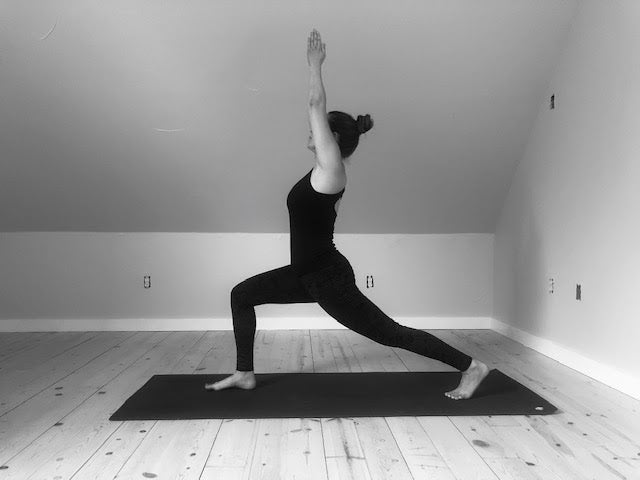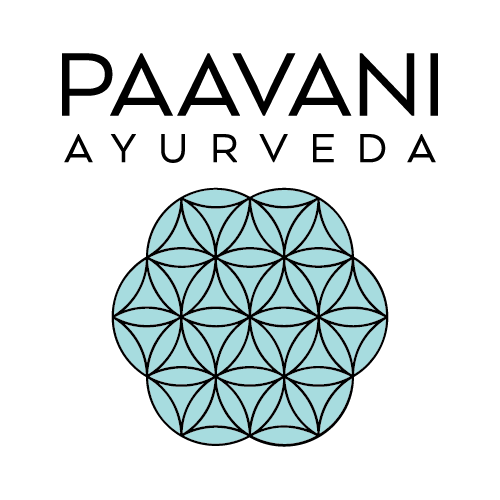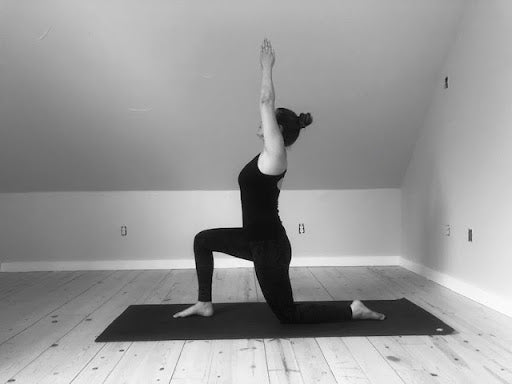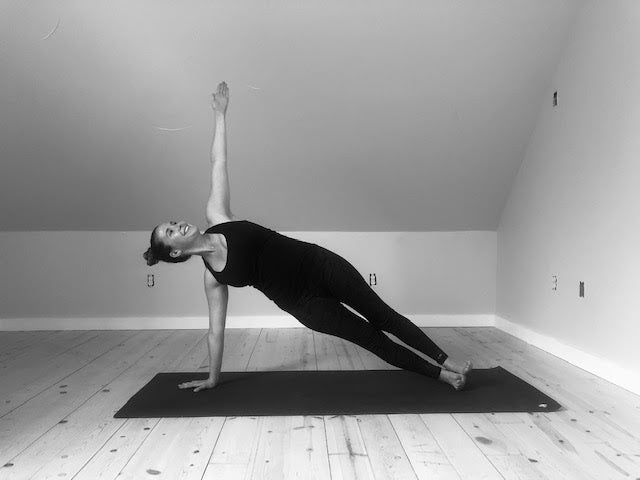
Ashta Chandrasana: An Ayurvedic Guide to High Lunge

Ashta Chandrasana literally translates to, Eight Moon Crescent Pose; however, it is more commonly known as High Lunge. This strong standing posture has a myriad of benefits including:
From the Ayurvedic perspective, High Lunge is stabilizing and calming to vata dosha and strengthening, heat building and cleansing for kapha dosha. People working to decrease pitta dosha can also do this pose in their practice. Yet, because of its heating effects, it is recommended that they hold Ashta Chandrasana for a shorter period of time in order to not aggravate pitta dosha.
How to Do Ashta Chandrasana:
- From Downward Facing Dog, inhale and step the right foot forward between the hands with the right knee directly over the right ankle. Continue to stay strong through the left leg.
- Inhale and bring your torso upright while simultaneously reaching the arms up and overhead. If possible, bring the gaze upward towards the hands or bring the gaze forward.
- Be aware of the position of your front ribs. To keep them from flaring open and putting unnecessary strain on the low back, knit the front ribs down and draw them towards the spine.
- The shoulders move down the back and the tailbone draws down slightly.
- Reach back through the left heel and stay engaged throughout the entire body.
- Hold for 5 rounds of breath, or less if working to decrease pitta dosha.
- Bring the hands down to the mat and step back into Downward Facing Dog.
- Repeat this series on the opposite side.
How to Do Ashta Chandrasana, Heart Opening Variation:

- From Downward Facing Dog, inhale and step the right foot forward between the hands with the right knee directly over the right ankle. Continue to stay strong through the left leg.
- Inhale and bring your torso upright while simultaneously reaching the arms up and overhead. If possible, bring the gaze upward towards the hands or bring the gaze forward.
- Be aware of the position of your front ribs. To keep them from flaring open and putting unnecessary strain on the low back, knit the front ribs down and draw them towards the spine.
- The shoulders move down the back and the tailbone draws down slightly.
- Reach back through the left heel and stay engaged throughout the entire body.
- With an exhale, interlace the hands behind the back.
- Squeeze the heels of the hands together, bring your gaze upwards and expand open through the heart center with an inhale.
- Hold for 5 rounds of breath, or less if working to decrease pitta dosha.
- Bring the hands down to the mat and step back into Downward Facing Dog.
- Repeat this series on the opposite side.
Precautions:
Contraindications for Ashta Chandrasana:





Leave a comment
This site is protected by hCaptcha and the hCaptcha Privacy Policy and Terms of Service apply.